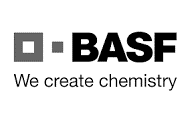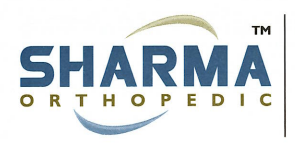- Customs Valuation
- 222 Views
Center Director
Apparel, Footwear and Textile Center of Excellence
CBP San Francisco Field Office
555 Battery St, Room 433
San Francisco, CA 94111
RE: Application for Further Review and Protest No. 0712-19-100276; Valuation of apparel
This is in response to the Application for Further Review (“AFR”) of Protest No. 0712-19-100276, timely filed by Alston & Bird LLP on behalf of their client GRG USA LLC (“GRG”). This AFR concerns the proper method of appraisement under 19 U.S.C. 1401a of apparel imported from Canada. GRG protests the Port’s decision that the imported merchandise should be appraised based on the price between GRG and its U.S. customers.
FACTS:
The parties involved in the transaction at issue are GRG, the importer of record, and Montreal-based Groupe Dynamite Inc. (“GDI”), the Canadian seller and GRG’s parent company. GRG is a company incorporated in Delaware that operates 94 retail stores nationwide and employs over 1,000 U.S. workers. GDI is a fashion retailer with two teen fashion brands, Garage and Dynamite. GDI sources apparel products from unrelated suppliers in Canada and other countries and sells them in Canada and the United States.
The merchandise in the protested entry is apparel that GRG purchased from GDI and imported from Canada to the United States in July 2018. GRG states that it bought the merchandise from GDI on Ex-Works sales terms. The merchandise was shipped from Montreal and entered the United States through the Port of Champlain, New York destined for various GRG retail stores across the country. GRG declared a total entered value of $130,324 and duty amount of $18,757.73. In April 2019, CBP found that the related party sales price was not an acceptable transaction value. CBP advanced the value of the merchandise at liquidation at a value approximating the merchandise’s U.S. retail sale price and calculated a duty amount of $82,909.23. GRG is protesting this decision arguing that the subject merchandise should be valued according to the sales price between GRG and GDI or, alternatively, under the deductive value method. To supports its argument, GRG provided the following:
. Proforma invoices and proofs of payment, . Shipping manifest, . Shipping invoices and proofs of payment, . Cargo insurance policy and proofs of payment, . An insurance policy for retail locations, . An Inventory Supply Agreement between GRG and GDI, . A list of sales managers and directors in the United States, . Email communications about U.S. store operations, . Financial statements, . Tax Filings, . Paystubs for GRG employees, . A lease for a GRG retail location, . An agreement with JPMorgan Chase for merchant payment processing services, . A Management Agreement between GRG and GDI and proofs of payment, and . Deductive value calculations.
The pro forma invoice issued by GDI to GRG dated July 31, 2018, shows GDI is identified as the “Exporter” and GRG is identified as the “Buyer.” The pro-forma invoice provides for the Ex-Works sales term by specifying “Terms – Plant” and “U.S. Duty, MPF and/or Brokerage fees for [account] of Buyer.” GRG states that it paid the freight and insurance from the Montreal warehouse to GRG’s U.S. stores, and provided an invoice from and payment to the freight service provider, and an invoice from and payment to the insurance broker. GRG also provided a cargo insurance policy that lists both GDI and GRG as the insured.
Sales
GRG states that GDI and GRG have entered into an Inventory Supply Agreement that serves as an overarching supply contract between the parties. The Inventory Supply Agreement states that the title of the goods is transferred from GDI to GRG upon delivery of the products to GRG. The Inventory Supply Agreement also provides that the purchase price to be paid by GRG “shall be equal to the Supplier’s landed cost at its distribution center, plus a margin to be agreed by the parties from time to time.” GRG must pay GDI within 45 days from the date of receipt of GDI’s invoice and GDI may consolidate monthly invoices to facilitate administration of payments by GRG. In addition, GRG is responsible for any costs and expenses associated with returning products to GDI.
The Inventory Supply Agreement also states that GRG “shall purchase exclusively from the supplier,” and that:
The Supplier will place orders of products for sale at retail for [GRG] based on [GRG’s] needs and taking into account availability of products, [GDI’s] commercial criteria, specific products’ and/or stores’ actual or expected sales performance or for any other reason determined by the Supplier, acting reasonably. . . . The Customer acknowledges that new products may be developed rapidly during a season by the Supplier and/or its affiliates and sold to the Customer from time to time during seasons based on the same criteria as above. . . . The Supplier reserves the right to amend, increase or otherwise modify or place additional orders of products intended for the Customer’s stores based on the Customer’s needs and new product availabilities or actual and expected sales trends variances.
Management
GDI and GRG share many officers and GDI performs many administrative functions on behalf of GRG pursuant to their Management Agreement. According to this agreement, GDI is responsible for the following functions: store operation support, loss prevention policy and surveillance, call center (customer and store services), finance and administration, human resources, information technology, real estate management (leasing, construction, and maintenance) legal support, executive team, and warehousing and distribution to stores. The management agreement states: “The services to be provided by [GDI] to GRG comprise all such services normally associated with a head office of a national brand retail chain . . .” Therefore, all these functions are conducted in Canada, where the parent company, GDI is located. In exchange, GRG reimburses GDI for a percentage of all GDI’s administrative costs that is attributable to U.S. retail operations. The management Agreement requires that GDI invoice GRG for the services monthly and GRG pay GDI 30 days after invoicing. The Management Agreement further provides that it does not grant authority for either party to act for the other party in agency or other capacity. GRG provided records reflecting the invoicing by GDI and payment by GRG for the administrative services GDI provided GRG during the time the merchandise at issue was sold.
Regarding U.S. operations, GRG has sales managers physically present in the United States who manage the U.S. retail sales operation. GRG has two Regional Sales Directors, eight District Sales Managers and a Store Manager for each of the 94 retail stores. The Regional Sales Directors are located in New Jersey and California. GRG states that Regional Sales Directors’ responsibilities include developing sales strategy and plans, analyzing and determining product mix, assortment, and inventory levels in the stores. The District Sales Managers are in regular contact with GDI to discuss inventory demand, marketing, sales forecasts, product pricing, product assortment and other sales operations.
GRG states that it acts as an independent legal entity and enters into contracts with third parties in connection with the operation of its business and resale of the merchandise in the United States. GRG maintains that it leases and pays for an insurance policy for each store. GRG also provided a Payment Services Agreement, which shows that GRG entered into an agreement with JPMorgan Chase for merchant payment processing services.
GRG also stated that it maintains financial and accounting records separately from GDI. GRG files its own tax returns in the United States and GDI files its tax returns in Canada. GRG has bank accounts with Bank of America and Harris Bank which are separate from GDI’s account with Bank of Montreal. GRG’s payments to GDI are transferred on a weekly basis from GRG’s U.S. bank account to GDI. GRG states that it maintains its own payroll and pays its employees directly. GRG asserts that it is responsible for its own expenses – it either directly pays for its expenses to individual vendors or pays GDI for allocated expenses if the expenses are related to shared services.
On September 8, 2020, due to the COVID-19 pandemic, GDI and GRG jointly filed for the equivalent of bankruptcy protection in Canada under the Canadian Companies’ Creditors Act (“CCAA”). GRG and GDI also asked a Delaware court to recognize the proceedings. All public documents related to these proceedings were also reviewed by this office.
ISSUE:
What is the proper basis of appraisement for the transaction between GDI and GRG.
LAW AND ANALYSIS:
Merchandise imported into the United States is appraised for customs purposes in accordance with Section 402 of the Tariff Act of 1930, as amended by the Trade Agreements Act of 1979 (TAA; 19 U.S.C. 1401a). The primary method of appraisement is transaction value, which is defined as “the price actually paid or payable for the merchandise when sold for exportation to the United States,” plus amounts for certain statutorily enumerated additions to the extent not otherwise included in the price actually paid or payable. See 19 U.S.C. 1401a(b)(1). When transaction value cannot be applied, then the appraised value is determined based on the other valuation methods in the order specified in 19 U.S.C. 1401a(a).
To use transaction value, there must be a bona fide sale for exportation to the United States. In VWP of America, Inc. v. United States, 175 F.3d 1327 (Fed.Cir. 1999), the Court of Appeals for the Federal Circuit found that the term “sold” for purposes of 19 U.S.C. 1401a(b)(1) means a transfer of title from one party to another for consideration (citing J.L. Wood v. United States, 62 CCPA, 25, 33, C.A.D. 1139, 505 F.2d 1400, 1406 (1974)). Several factors are relied on to determine whether a bona fide sale exists. See Headquarters Ruling Letter (“HQ”) 546067, dated Oct. 31, 1996. No single factor is decisive in determining whether a bona fide sale has occurred. See HQ 548239, dated June 5, 2003. CBP will consider such factors as whether the purported buyer assumed the risk of loss for, and acquired title to, the imported merchandise. Also, CBP may examine whether the purported buyer paid for the goods, and whether, in general, the roles of the parties and the circumstances of the transaction indicate that the parties are functioning as a buyer and a seller. See HQ H005222, dated June 13, 2007.
Finally, pursuant to CBP’s Informed Compliance Publication, entitled “Bona Fide Sales and Sales for Exportation,” CBP will consider whether the buyer provided or could provide instructions to the seller, was free to sell the transferred item at any price it desired, selected or could select its downstream customers without consulting with the seller, and could order the imported merchandise and have it delivered for its inventory. A review of the documentation provided demonstrates that GRG was not able to perform any of these functions.
Under the terms of the Inventory Supply Agreement, GRG could not make any decisions about what product to order or how much. Nor could GRG purchase from any supplier other than GDI. The Inventory Supply Agreement states that GRG shall purchase exclusively through GDI and that:
The Supplier will place orders of products for sale at retail . . . The Supplier reserves the right to amend, increase or otherwise modify or place additional orders of products intended for the Customer’s stores based on the Customer’s needs and new product availabilities or actual and expected sales trends variances.
Therefore, GRG did not order inventory and merely accepted what GDI supplied.
GRG was also not free to select downstream customers. Although GDI did not dictate which retail shoppers could come into each retail location to purchase goods, GDI limited U.S. sales to retail customers under the Inventory Supply Agreement. GRG was not able to sell to a wholesale or other customer if it wanted. Additionally, according to the Management Agreement, GDI selected the retail locations. Therefore, GDI, not GRG, made decisions regarding what type of customers would be able to purchase its goods, and where.
Additionally, GDI was heavily involved with determining the final sales price to the U.S. customer. When asked how U.S. retail sales prices are determined, GRG stated that it determines the retail sales prices “in consultation with GDI, which leverages its resources and industry experience to provide services to GRG’s retail business. This arrangement is governed by the Management Agreement between GRG and GDI.” GRG supported this assertion by providing this office with the meeting minutes or notes from weekly operation meetings or calls between sales managers in the United States and GDI. According to GRG, the purpose of these calls was to discuss inventory, pricing, product demand, promotions, and other matters. However, none of these notes describe actual pricing data or strategies. Instead, these notes describe feedback from specific regions on whether certain promotions were successful, which products were in high demand or missing, whether window displays brought in customers, whether product displays were successful, etc. Further, according to the First Report of the Monitor in the Canadian CCAA proceedings,
Groupe Dynamite . . . functions as an integrated North American Business, with all decisions for the corporate group, the human resources accounting, treasury management, marketing, information technology functions, finance and administrative functions being centralized at and provided out of the head office in Montreal, including in respect to the operations in the United States. The main operational aspects of the business such as pricing decisions, business development initiatives and the supply chain management are made and planned out of Montreal.
Emphasis added. Therefore, it appears as though GDI, not GRG, determines final sales prices to retail customers in the United States.
However, GRG argues that GRG and GDI act as independent buyer and seller because “GRG acts as an independent legal entity and enters into contracts with third parties in connection with the operation of its business.” To support this assertion, GRG provided a lease agreement for one of its retail stores. The lease agreement lists GRG as the lessee, but is signed by the owner of GDI. Although GRG states that it is common practice for senior executives to be appointed to and act in different capacities across separate, legally distinct entities, it calls into question GRG’s ability to act as an independent buyer. Additionally, while GRG claims to be acting in its individual capacity when entering into lease agreements, the management agreement states GDI will handle “Real estate management (including leasing).” Therefore, it is unclear whether this officer is signing the agreement on behalf of GRG, as stated in the lease agreement, or on behalf of GDI, as required by the Management Agreement. This uncertainty suggests that the companies are closely intertwined, and that GRG is not acting independently in this respect.
A review of all other documentation submitted provides additional insight into the interconnectedness of these two parties. GRG pointed out that GRG maintains and pays for an insurance policy for each store and provided a policy that identifies GRG USA LLC as the insured. However, while GRG USA is the named insured, the address listed for the insured is GDI’s address, in Canada. GRG also noted that GRG has contracted for certain transaction services of JPMorgan Chase, but again, the address for GRG in the signature line is in “c/o Groupe Dynamite Inc.” and is the same as GDI’s Canadian address.
GRG noted that GRG pays GDI to handle certain administrative functions and, according to the terms of the management agreement, it appears that every function, other than sales, has been delegated to GDI. GRG argues that it is within their right to contract out services as they see fit. While GRG does compensate GDI for administrative services, GRG only reimburses GDI for a portion of the administrative costs incurred equal to the portion of all retail locations that are located in the United States. GDI does not receive a profit, nor does GRG pay for specific services provided. Therefore, it appears the costs attributable to U.S. stores are commingled with GDI’s costs for Canadian stores and the parties are not acting independently, as no profits are included in the charge for these services.
Finally, although GRG stated that the profit margin in sales between the parties was negotiated, GRG was not able to provide documentation on the negotiations of the profit margin in sales from GDI to GRG.
GRG argues that this case is similar to Headquarters Ruling (“HQ”) H254164, dated March 19, 2018, where CBP found that the sales transaction between a U.S. importer and its sister company in Canada was a bona fide sale. CBP noted that while the Canadian affiliate provided accounting and other important administrative services to the U.S. importer, the U.S. importer was not under the control of the Canadian affiliate when it sold products to U.S. customers. However, there are a few important distinctions between HQ H254164 and the instant case: while related, the companies involved in HQ H254164 did not share owners; the importer regularly purchased goods from other suppliers; and the foreign supplier did not dictate what the importer would purchase. Therefore, HQ H254164 is not relevant to the case currently at issue.
The fact that GDI has sole discretion in the amount of product purchased by GRG, that GDI is involved in determining prices to U.S. customers, and that various aspects of the two companies are intertwined is not indicative of an independent buyer and seller relationship. Therefore, we find that there is no bona fide sale between the parties and transaction value is not the appropriate basis of appraisal.
However, GRG asserts, and we agree, that the subject merchandise also cannot be valued at the price paid by the U.S. retail customers. Since the sales to the U.S. retail customers occur after importation, they are not sales for export to the United States. Therefore, we must look to one of the other methods of valuation.
When imported merchandise cannot be appraised on the basis of transaction value, it is appraised in accordance with the remaining methods of valuation, applied in sequential order. The alternative bases of appraisement, in order of precedence, are: the transaction value of identical merchandise; the transaction value of similar merchandise; deductive value; and computed value. If the value of imported merchandise cannot be determined under these methods, it is to be determined in accordance with section 402(f) of the TAA. 19 U.S.C. 1401a(a)(1).
The first and second alternative bases of appraisement are the transaction value of identical merchandise and the transaction value of similar merchandise, as determined in accordance with section 402(c) of the TAA. Appraised values of identical and similar merchandise are based on values that are acceptable as appraised values under section 402(b) of the TAA. 19 U.S.C. 1401a(c)(1). GRG does not import identical or similar merchandise from any supplier other than GDI. Additionally, no information regarding the value of other identical or similar merchandise being entered at or about the same time is available. Accordingly, the transaction value of identical or similar merchandise is unavailable as a basis of appraisement.
Computed value basis of appraisement is of equal preference to deductive value. However, since neither GRG nor GDI is the manufacturer or producer of the subject merchandise, computed value is not as available basis of appraisement.
Deductive value pursuant to section 402(d) of the TAA is the next applicable basis of appraisement and is based on the unit price at which the merchandise concerned is sold in the United States in the greatest aggregate quantity, generally in the condition as imported and at or about the time of importation of the merchandise being appraised. Provided the merchandise is not further processed, the unit price at which imported merchandise is sold in the greatest aggregate quantity means the unit price at which it is sold to unrelated persons at the first commercial level after importation. 19 U.S.C. 1401a(d). Generally, sales within the United States must be within 90 days after importation to use the deductive value method of appraisement. 19 U.S.C. 1401a(d)(2)(A)(ii).
GRG submitted a calculation of the deductive value for each of the styles in the protested entry with its protest. GRG stated that the deductive valuation method calculations are based on the unit price at which the item was sold in the United States in its condition as imported and in the greatest aggregate quantity either at or about the time of importation, or before the close of the 90th day after the date of importation. To reach the deductive value, GRG then reduced the starting price by deducting the following expenses:
. General expenses occurring after importation – In identifying the appropriate expenses, GRG reviewed the items in its Profit & Loss statements and identified only those relating to the sale of the merchandise in the United States;
. Cost of sales – This includes expenses such as the cost of transportation and insurance associated with international shipment of the goods from Asia to North America, as well as customs brokerage fees;
. Profit – GRG used zero in its calculations because GRG operated at a loss in the relevant period, though GRG indicated that it could deduct an amount for the profit usually made in connection with sales in the United States of apparel articles of the same class or kind;
. Costs of transportation and insurance associated with U.S. inland transportation;
. U.S. customs duties;
and then increased the price by adding:
. the packing costs incurred in the United States.
To use the deductive value method, GRG must make some modifications to these calculations. First, costs related to the shipment of the goods from Asia to North America should not be deducted from the sale price in the United States. According to 19 CFR 152.105(d)(2,3) only the costs from the country of export (in this case, Canada) to the United States and costs from place of import to place of delivery in the United States should be deducted. Second, according to 19 CFR 152.105(e):
The deduction made for profit and general expenses (taken as a whole) will be based upon the importer’s profit and general expenses, unless the profit and general expenses are inconsistent with those reflected in sales in the United States of imported merchandise of the same class or kind from all countries, in which case the deduction will be based on the usual profit and general expenses reflected in those sales, as determined from sufficient information.
Emphasis added. Therefore, since GRG operated at a loss during the relevant period, GRG must use the profit usually made in connection with sales in the United States of apparel articles of the same class or kind. Subject to your office’s approval of the documentation provided, the proper basis of appraisal is the deductive value method.
HOLDING:
The protest should be GRANTED. Appraisement of the merchandise should be based upon the deductive value.
Janron Consult, Tax Consultant Kenya, Customs Tax Consultant Kenya, Tax Advisory Kenya








